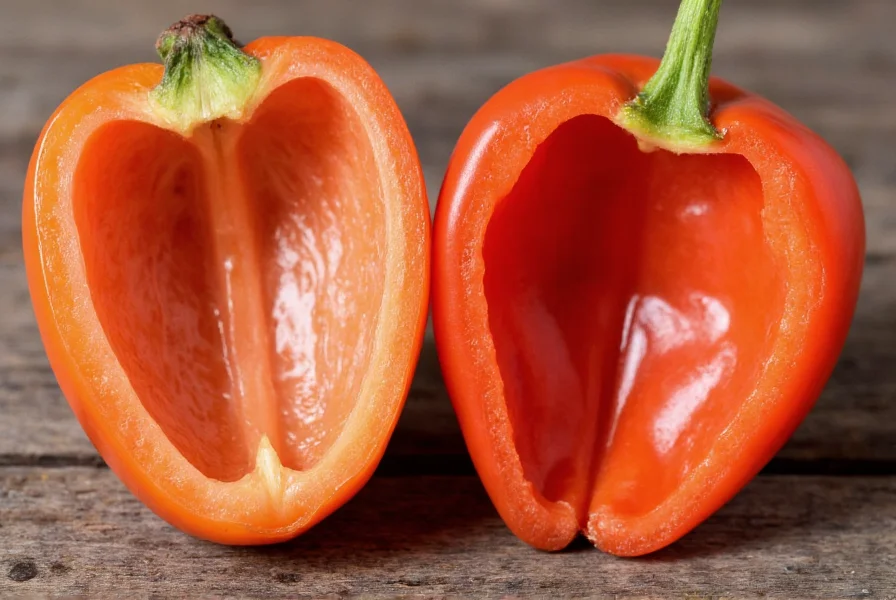Many gardeners and food enthusiasts encounter confusion when searching for “cactus chili,” but this term represents a common botanical misunderstanding rather than an actual plant variety. Understanding this distinction helps prevent gardening mistakes and culinary confusion.

Why the Cactus Chili Confusion Exists
The “cactus chili” misconception arises from several intersecting factors. First, the red, elongated fruit of certain prickly pear cactus varieties (Opuntia ficus-indica) bears a superficial resemblance to some chili pepper varieties, particularly when viewed from a distance. Second, the similar pronunciation of “cayenne” and “cactus” leads to frequent miscommunication, especially in verbal conversations about spicy foods.
Botanically speaking, chili peppers and cacti occupy entirely different plant families with distinct characteristics. This fundamental classification difference explains why you'll never find authentic chili peppers growing on cactus plants, regardless of climate or growing conditions.
Key Differences Between Cacti and Chili Plants
| Characteristic | Cacti (Opuntia) | Chili Peppers (Capsicum) |
|---|---|---|
| Plant Family | Cactaceae | Solanaceae (nightshade) |
| Fruit Type | Berry (tuna) | Capsicum berry |
| Spice Level | Non-spicy (0 SHU) | Varies (100-2,000,000+ SHU) |
| Stem Structure | Modified pads (cladodes) | Woody branches |
| Water Requirements | Very low | Moderate to high |
Prickly Pear Cactus: The Real Source of Confusion
The prickly pear cactus (Opuntia species) produces edible fruits called “tunas” that often get mistaken for chili peppers. These fruits range from deep purple to bright red when ripe, creating visual similarity to certain chili varieties. However, prickly pear fruit lacks capsaicin—the compound responsible for chili heat—making it completely non-spicy.
Native to arid regions of the Americas, prickly pear cactus fruits have been consumed for centuries by indigenous populations. The fruit offers a sweet, watermelon-like flavor with subtle citrus notes, completely different from the heat profile of even mild chili peppers. When properly prepared (removing spines and glochids), prickly pear fruit serves as a refreshing ingredient in beverages, jams, and desserts.
Common Chili Varieties Mistaken for “Cactus Chili”
Certain chili varieties contribute to the cactus confusion due to their appearance or names:
- Cayenne peppers - Long, thin, red chilies often confused verbally with “cactus”
- Chiltepin peppers - Small, round wild chilies sometimes found near cacti in desert regions
- Serrano peppers - Bright red varieties that may resemble prickly pear fruit at a glance
- Apache chili peppers - Deep red ornamental chilies with desert-inspired names
Gardeners searching for “cactus chili seeds” typically find either cayenne pepper varieties or prickly pear cactus seeds, neither of which represents an actual hybrid plant.

Growing Conditions: Can Chilies Thrive in Cactus-Like Environments?
While chili peppers don't grow on cacti, some varieties can tolerate arid conditions similar to cactus habitats. Certain heirloom chili varieties native to desert regions of Mexico and the American Southwest have adapted to:
- Well-draining sandy soils
- Full sun exposure
- Infrequent but deep watering
- High temperature fluctuations
Chili varieties like the Apache, Sandia, and certain pasilla types demonstrate better drought tolerance than standard bell peppers or jalapeños. However, even these desert-adapted chilies require more consistent moisture than true cacti and will not survive in the extremely arid conditions where cacti thrive.
Culinary Applications: Prickly Pear vs. Chili Peppers
Understanding the distinction between these plants prevents culinary mishaps. Prickly pear fruit serves as a sweet ingredient in:
- Mexican agua frescas and cocktails
- Preserves and jellies
- Desserts and sorbets
- Salad dressings and vinaigrettes
Chili peppers, by contrast, provide heat and complex flavor profiles to:
- Salsas and hot sauces
- Stews and braises
- Marinades and rubs
- Preserved condiments
Substituting one for the other creates dramatically different results—using prickly pear when a recipe calls for chili peppers yields a sweet rather than spicy dish, while using chilies in place of prickly pear creates unexpectedly fiery results.
Frequently Asked Questions
Does a cactus chili plant actually exist?
No, there is no actual cactus chili plant. Chili peppers belong to the nightshade family (Solanaceae) while cacti belong to the Cactaceae family. The confusion typically comes from mishearing 'cayenne' as 'cactus' or mistaking the red fruit of prickly pear cacti for chili peppers.
Why do people confuse prickly pear fruit with chili peppers?
Prickly pear cactus produces red, elongated fruits that visually resemble some chili pepper varieties, especially from a distance. Both grow in similar desert regions of the Americas, and the red color of ripe prickly pear fruit creates a superficial similarity to red chili peppers, though prickly pear fruit contains no capsaicin and is not spicy.
Can I grow chili peppers on a cactus?
No, it's botanically impossible to grow chili peppers on a cactus. Chilies and cacti belong to completely different plant families with incompatible biological structures. While you can grow both plants in similar arid environments, they cannot be grafted together or share growth structures due to fundamental genetic differences.
What's the difference between cayenne and cactus?
Cayenne refers to a specific type of hot chili pepper (Capsicum annuum) known for its heat and used in cooking and supplements. Cactus refers to plants in the Cactaceae family, characterized by spines and water-storing tissues. The terms sound somewhat similar, leading to frequent miscommunication, but they describe completely different botanical entities.











 浙公网安备
33010002000092号
浙公网安备
33010002000092号 浙B2-20120091-4
浙B2-20120091-4